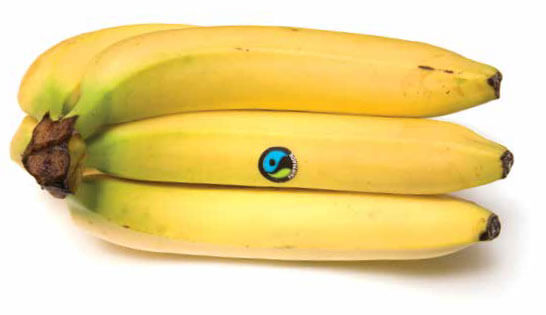Trading with purpose
Right now, in cubicles, offices and breakout rooms around the world, marketers are striving to set down statements of brand purpose. The output themes will vary – let’s change the world, let’s serve customers better, let’s appoint a “chief purpose officer” to handle this stuff – and so will the underlying motivations.
For some, a quietly stated purpose reflects a deep commitment to do business in a socially responsible way and give employees better reasons to get up in the morning – even if living up to it might imply commercial sacrifice. This is both altruistic and realistic.
Others, persuaded perhaps by recent books on the subject, will see purpose as a means to enhance brand growth, attract new consumers and keep old ones loyal – a “win-win” play whereby the brand does some good in the world and reaps commercial reward. Unfortunately, the evidence to support this happy outcome is weak.
Part of that is down to the difficulty in isolating purpose in consumers’ decisions to choose your brand – always assuming you’ve managed to communicate it in the first place. Authors such as Jim Stengel have tended to work backwards from successful brands and sought to show that they have a strong sense of purpose at the core. But cause and effect is not proven. Does a higher-order brand purpose, when consumers perceive it, really affect purchase decisions?
There is one brand we can look at to illuminate that, since it operates right there on the supermarket shelf and depends on active consumer choice, but is pure purpose – a higher-order ideal that you can pick up and pop in your trolley.
That brand is Fairtrade, founded 25 years ago in the UK and now established around the world. It exists to “empower producers to combat poverty” by promoting “fairer trading conditions” and, in the task of communicating that purpose, it has an advantage over your brand, since it has little need to communicate anything else.
The result is that it enjoys enviably high scores for awareness and understanding. In the UK, 81% of consumers are familiar with the brand and 60% agree with the statement that it improves the lives of developing-world producers. How do these noble ideals – recognised, understood and endorsed by consumers – translate to on-shelf sales?
 Poorly is the answer. Products with the Fairtrade mark account for less than 1% of total UK grocery sales. It does better in its heartland, the roast and ground coffee sector, with sales at 24.7%, but is down at 3.4% in mass-market instant. A few years back, the organisation resolved to do more to translate sky-high awareness into wider consumer uptake, only to see sales fall for two consecutive years before recovering a little in 2016.
Poorly is the answer. Products with the Fairtrade mark account for less than 1% of total UK grocery sales. It does better in its heartland, the roast and ground coffee sector, with sales at 24.7%, but is down at 3.4% in mass-market instant. A few years back, the organisation resolved to do more to translate sky-high awareness into wider consumer uptake, only to see sales fall for two consecutive years before recovering a little in 2016.
Perceived price may have something to do with this, as Fairtrade-certified goods are guessed to come at a premium, even though that is not always so.
And in European markets, the brand has been hit by criticism of its “mass balance” policy, which means that a single pack carrying the Fairtrade logo might contain no fairly traded ingredients whatsoever – even though, taken as a whole, that product line would have to meet a minimum requirement.
The main reason for consumer apathy in the supermarket aisle, though, is likely to be more prosaic. At that point, with their heads very much out of the clouds and their priorities decidedly more rooted in the here and now, consumers reach for the brands that make the most immediate, instinctive sense. There’s a “bogof” on this one, the kids really like that one – changing the world can wait.
If it’s not exactly a cinch for Fairtrade, with its ability to fuse sales messages and purpose as one, it will be all the harder for routine lavatory cleaners or hairsprays.
For marketers, the obvious implication is to be clear upfront what you want to achieve in that purpose workshop. Those who seek to conflate “purpose” with “purchase” will need to do an “altitude check” on the outputs filling up the flip chart.
Higher-order ideals can soar up there at 50,000ft – the ones that talk “humanity”, “planet” or “sustainability”. You can bet they will count for little at 0ft, where the consumer reaches for the brand or hovers over an appealing competitor.
So be prepared to come lower – to altitudes closer to Earth, where “purpose” can be meshed more naturally with the benefit consumers seek from the sector. The Tesco one (see panel) is a good example.
Brand purpose has become fashionable, and there is nothing wrong with that. You might just need to accept that what feels most noble in a cubicle, office or breakout room can feel like an unaffordable luxury in the boardroom, when the latest sales data is in.
Brand purpose statements in descending order of “altitude” – 50,000ft at the top, 1,000ft at the bottom. What’s the right level for yours?
Unleash human potential.
Nike
To inspire and nurture the human spirit – one person, one cup and one neighborhood at a time.
Starbucks
Help people across the world lead healthier and happier lives.
Boots
Helping people achieve their ambitions – in the right way.
Barclays
Make natural, delicious and healthy drinks that help people live well and die old.
Innocent
Making life better by entertaining and connecting people.
Sky
To serve the world by making food people love.
General Mills
Serving Britain’s shoppers a little better every day.
Tesco
